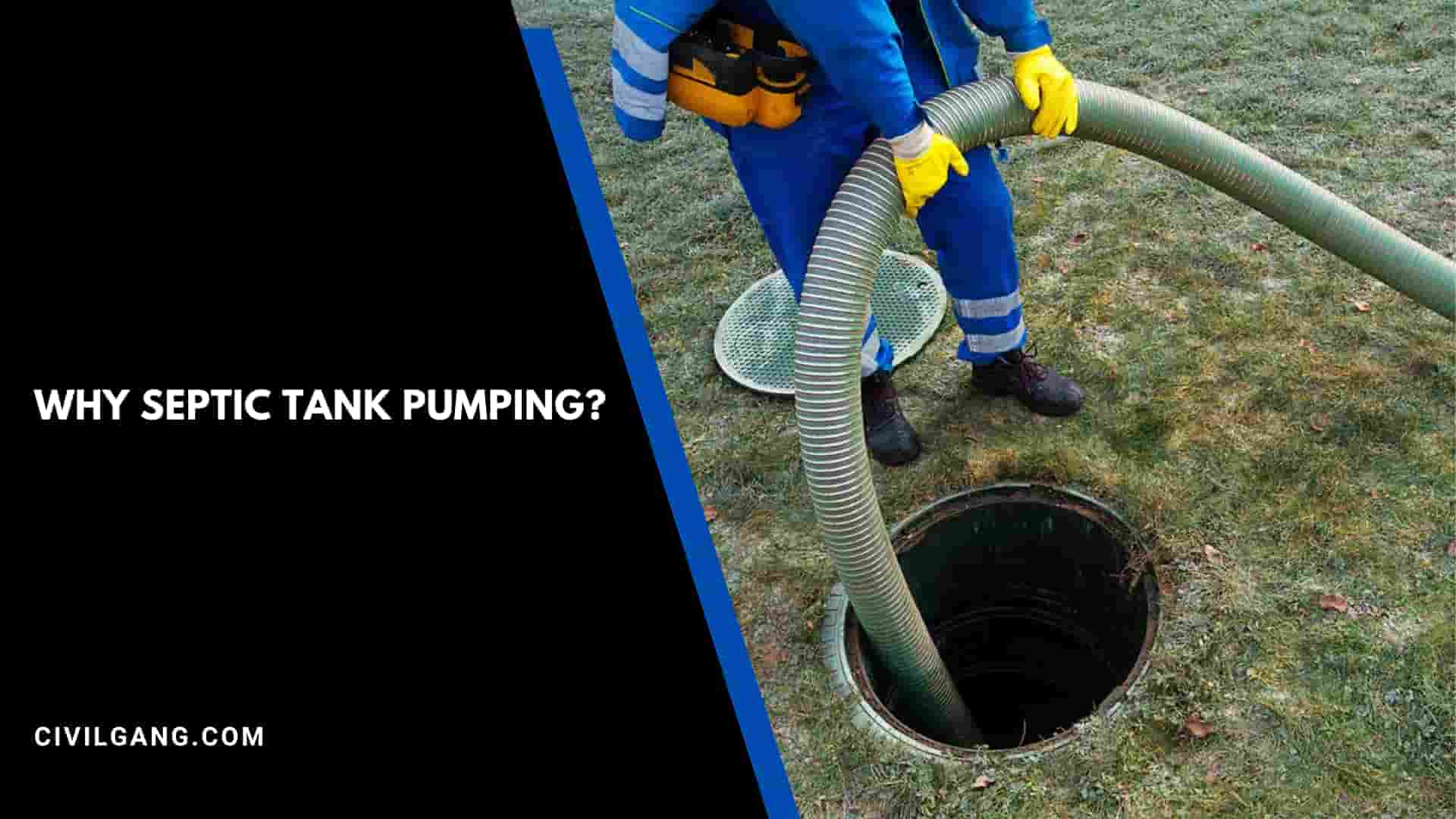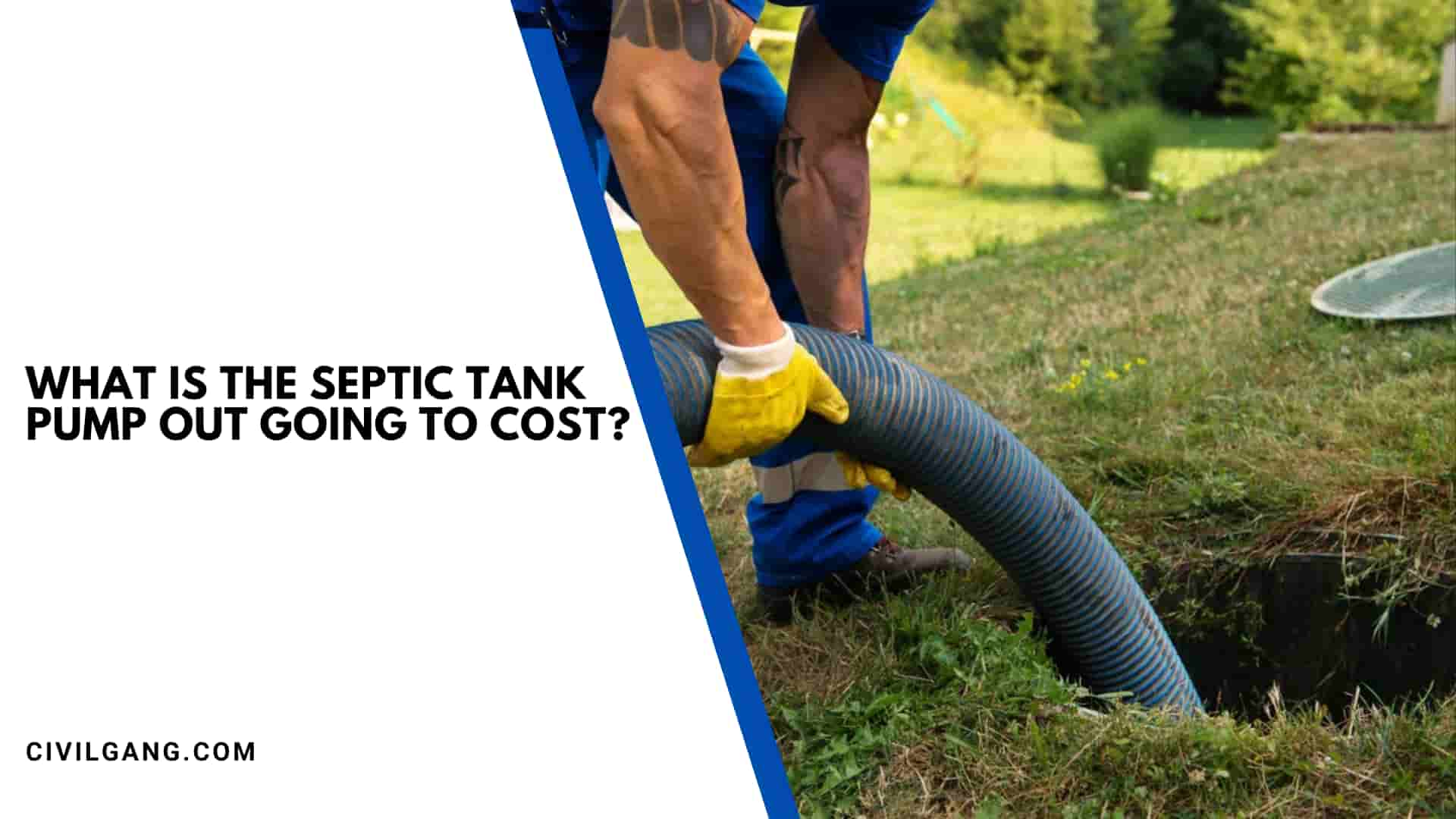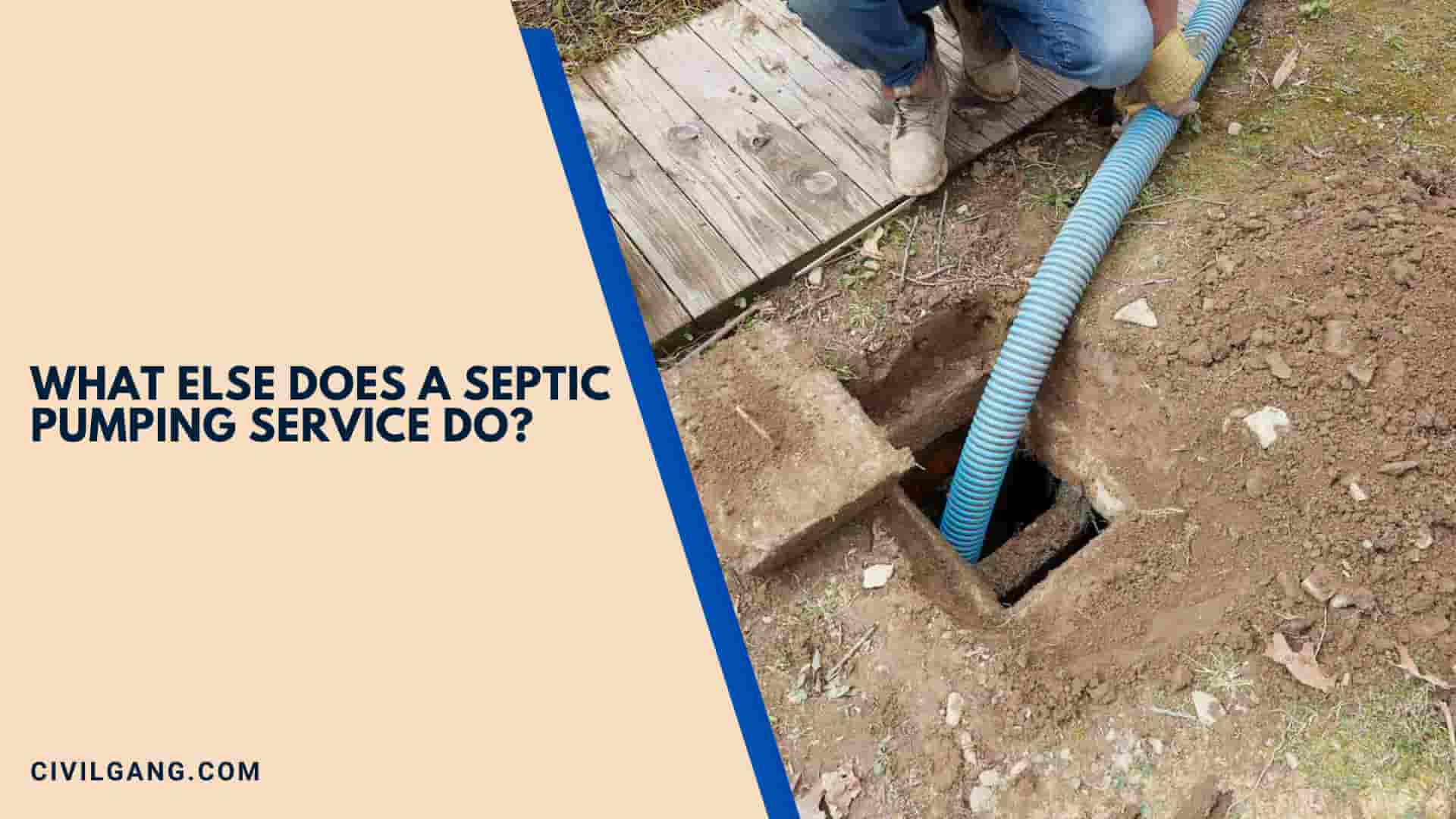How to Keep Septic Tank Pumping Costs to a Minimum?
Maintenance of the whole septic system is required for proper treatment and disposal of household sewage. A system that has been correctly sited and installed can function successfully for many years with regular use and maintenance.
While a traditional septic system has no moving components and usually does not require weekly or monthly maintenance, some fundamental maintenance guidelines must be followed.
The following are important maintenance procedures:
1. Minimize Water Usage
Leaky faucets and toilets should be fixed as soon as possible. Reduce the amount of water used in baths by taking shorter showers. Flushing toilets with less water is a good idea.
The amount of water necessary to fill the tank is reduced by placing an object in the water closet for the toilet.
Use only full loads in dishwashers and washing machines. To avoid overloading the drain field, spread laundry washing out throughout the week.
While shaving, brushing teeth, washing dishes, and other activities, turn off the water. Build water-saving taps as well as showerheads. While changing appliances, look for ones that conserve water.
Backwash-like water treatment devices, and water softeners, including HVAC condensate lines, should not be let into the septic system. Instruct family members, particularly kids, on the importance of conserving water.
2. Provide Adequate Site Drainage
Drainage of the drain field is critical so that wastewater can be absorbed by the ground. Following the installation of the septic system, the drain field area should be graded to remove any low spots or depressions, allowing proper surface water drainage.
Gutter and downspouts should be directed away from the septic tank and drain field to improve site drainage. To safeguard the drain field area, drainage improvements are frequently required. French drains, interceptor drains, swales, and berms are some of the changes that can be made.
Compacted soil and loss of vegetation impair the earth’s ability to receive and treat wastewater, so don’t drive over the drain field.
3. Pump Septic Tank Regularly
A septic tank’s main job is to settle the particles out of the incoming wastewater. These solids will build up in the tank’s bottom over time (sludge).
Solids will continue to accumulate inside the septic tank if they are not removed on a regular basis. The collection of these solids shortens the retention time for wastewater entering the tank and increases the likelihood of sediments escaping.
If sediments depart the septic tank, they may clog the distribution box or the distribution pipes, decreasing the system’s ability to work correctly.
4. Use Proper Landscaping in System Area
To minimize soil erosion, a healthy grass cover should be maintained over the drain field. To avoid roots obstructing or harming drain lines, trees and shrubs should not be planted too close to the drain field.
It is strongly advised against installing an irrigation system in the septic drain field area. Irrigation systems increase the volume of water sent to the drain field, which may cause the system to collapse.
Over the septic tank or drain field area, no structures, sheds, pools, patios, or paved surfaces should be built.
5. Inspect Septic System at Each Pumping
Because the septic tank must be opened for pumping, now is a good opportunity to evaluate the complete septic system visually.
Cracks, leaks, and any evident damage to the septic tank should be checked. Watertight seals and obstructions in the plumbing pipes should be checked.
Each time the tank is pumped, the effluent filter should be removed and cleaned. If the effluent filter is not cleaned regularly, it may become clogged, allowing sewage to back up into the house.
Check for shifting or other indicators of damage in the distribution box. It may be essential to clean and level the distribution box.
The drain field region should be examined visually as well. Any issues should be dealt with right away if they are discovered.
6. Use Sound Waste Disposal Practices
Septic tanks are used to dispose of human waste as well as water used for laundry, dishwashing, and bathing.
If the septic system was not intended to support one, using trash disposal in the kitchen sink should also be avoided.
Disposing of non-biodegradable materials through domestic plumbing causes the septic tank to fill more quickly, increasing the risk of particles entering the drain field and causing it to collapse.
Why Septic Tank Pumping?
Residents are capable of keeping their septic tanks as well as drain fields in good working order. So you’re simply thinking about how often septic tank pumping costs.
The rate of septic tank pumping is determined by a variety of factors. When the scum (top) layer of a septic tank gets within 6 inches of the outflow pipe, the Environmental Protection Agency (EPA) requires it to be flushed.
Unfortunately, you may not realize your septic tank is full until you notice a problem, such as unpleasant odors emanating from your drains or, worse still, a septic system blockage.
It’s vital to know what’s involved in septic tank pumping in order to estimate prices. The septic tank receives all of the wastewater from the house through a line.
Septic tanks are meant to store wastewater long enough for solids (sludge) to settle to the bottom and grease and oil (scum) to float to the surface. Only wastewater is discharged into the drain field due to the tank’s design, which prevents sludge and scum from escaping the septic tank.
Newer tanks feature risers that reach ground level and are topped with lids, making it simple to access the septic tank. Older tanks include holes on the septic tank and underground.
Typical Problems Leading to Septic Tank Pumping
A septic tank typically operates efficiently in between septic tank pumpings. Problems, on the other hand, might arise for any number of causes.
The following are some examples of common septic tank issues:
- The septic tank is filled with floating scum and sludge.
- The pipes going to the septic tank from the interior fixtures are clogged or obstructed.
- Because water cannot leach into the earth, the scum and sludge levels are so high that they exit the septic tank and reach the drain field, clogging it up.
- Heavy rainfall or a high water table has soaked the ground.
- Because of fractures in the drainpipe caused by roots or anything else, too much water is spilled into the field area.
- Because the drainpipe is crushed, water in the septic tank rises too high, pushing sewage into the home’s drains.
When you smell that nasty stench in your house, it’s clear that there’s more to it than just a full septic tank. When a professional pumps a septic system, he or she is also trained to detect drain field issues or sewage flowing backward from where it should be entering the tank.
What Is the Septic Tank Pump Out Going to Cost?
The following are some of the elements that influence the cost of a septic tank pump-out:
- The septic tank’s capacity.
- The tank’s capacity at the time of septic pumping.
- Before the septic pumping service arrives, the homeowner must perform some preparation work.
- The state of the drain field’s pipes.
- The septic tank’s age.
- The location is important.
- A contractor has been chosen.
The cost of septic tank pumping is quite low when compared to the expense of repairing a drain field or a septic tank.
The following are typical septic pumping costs:
The average cost of a septic tank pump out in the United States is: $295-$610
- $175-$300 for a 750-gallon tank
- $225-$400 for a 1,000-gallon tank
- $275-$500 for a 1,250- to 1,500-gallon tank
- $600 for large tanks above 1,500 gallons.
A homeowner may expect to pay between $250 and $500 for a septic system pumping. Preparing the environment for the septic tank professional might save money in some cases. The homeowner, for example, can ensure that the tank access port is clear for the technician.
What Else Does a Septic Pumping Service Do?
Pumping out a septic tank might take up to five hours. The price structure of any firm is determined by them. Some businesses charge by the hour, while others offer a fixed price with extra charges if more than septic tank pumping is required.
In certain situations, septic tank repair is included in the septic pumping service. On top of the septic tank pumping expense, this can cost up to $1,500. If the drain field requires repair, the cost will almost certainly be much higher.
Replacing or repairing a drain field so that the septic system functions correctly might cost thousands of dollars. It’s crucial to keep in mind that septic system pumping costs are generally for a three-year period.
To keep a septic system in excellent working order, the EPA advises pumping it every three to five years. You may avoid costly septic tank and drain field problems by investing up to $500 every three to five years.
Take the Guessing Out of Septic Pumping Cost
- New septic tanks range in price from $3,060 to $ 9,810. Unlike high-end systems, which may cost up to $20,000, low-end systems only cost $465 each.
- It costs on average $6,420 to install a new septic tank system in the U.S., although prices vary from state to state depending on a number of criteria.
- Each state has its own building permits and licenses regulations, as well as its own prices for each. Before breaking ground on a septic tank installation, be sure you know the requirements in your area.
- The cost of a septic system also varies depending on where you live due to the different types of soil. Sandy, well-drained soil is ideal. A well-drained sandy soil reduces labor and material expenses, therefore septic tank system costs in sandy areas are roughly $3,000.
Cost to Pump Septic Tank ( Different City in Us, Table Format)
| NEW YORK | $405.17 fixed fee for 1,000 gallon tank |
| LOS ANGELES | $370.21 fixed fee for 1,000 gallon tank |
| CHICAGO | $311.38 fixed fee for 1,000 gallon tank |
| HOUSTON | $255.05 fixed fee for 1,000 gallon tank |
| PHOENIX | $267.42 fixed fee for 1,000 gallon tank |
| SAN DIEGO | $359.28 fixed fee for 1,000 gallon tank |
How Much Does It Cost to Pump a Septic Tank?
It costs an average of between $295 and $610 in the United States to clean and pump a septic tank. A 750-gallon tank may cost as little as $250, while a 1,250-gallon tank could cost up to $895.
How Much Does It Cost to Pump a 1500 Gallon Septic Tank?
1,250- to 1,500-gallon tank: $275-$500. Large tanks over 1,500 gallons: $600.
How Long Can a Septic Tank Go Without Being Pumped?
You can wait up to 10 years to drain your tank provided that you live alone and do not use the septic system often. You may feel like you can pump your septic tank waste less frequently to save money, but it’ll be difficult for you to know if the tank is working properly.
How Much Does It Cost to Pump a Septic Tank?
The average cost is $300, but can run up to $500, depending on your location. The tank should be pumped out every three to five years.
Why Do I Have to Pump My Septic Tank So Much?
Much like the human body’s digestive system, the septic tank uses anaerobic digestion to naturally break down the waste for the next level of filtration. If your septic tank is pumped too often, that bacteria will have no place to go but out into the drain field, which can lead to clogs and failures.
How Much Does a Pump for a Septic Tank Cost?
The national average cost to clean and pump a septic tank is between $295 and $610 with most people spending around $375. Depending on the size of your septic tank, pumping could cost as low as $250 for a 750-gallon tank, or as high as $895 for a 1,250-gallon tank.
How Often Should a 1500 Gallon Septic Tank Be Pumped?
The size of the tank is one determining element regarding how often it ought to be pumped. For a household of 4 with a 1,000-gallon tank, it’s advised that it be pumped every 2.6 years, but for a 1,500-gallon tank, the time can be extended to 4.2 years and up to 5 years for a 2,000-gallon tank.
Septic Tank Pumping Cost
The typical costs for septic pumping are as follows: National average cost for a septic tank pump-out: $295-$610. Up to 750-gallon tank: $175-$300. Up to 1,000-gallon tank: $225-$400.
Cost of Maintaining a Septic System
While you might get your tank pumped every 3 to 5 years, it’s not the only septic tank maintenance cost. Expect to spend anywhere from $100 to $1,000 or more every few years on maintenance.
Septic Tank Maintenance Cost.
| Maintenance Task | Cost |
| Pumping | $200 – $800 |
| Jetting | $150 – $400 |
| Effluent Filter Clean/Change | $100 – $150 |
Cost of New Septic Pump
Usually, a new septic tank pump replacement costs $500 to $1,200.
Cost to Replace a Septic Pump
Usually, a replacement septic tank pump costs $500 to $1,200.
Average Cost to Pump Septic System
Typically, a homeowner will pay between $250 to $500 for a septic system pumping. Sometimes, a homeowner can save money by preparing the area for the septic tank technician.
Cheapest Septic Pumping
Most septic tanks need to be pumped out every 3-5 years. However, the exact interval will depend both on the size of your tank and the number of people currently living in your house. A single person may be able to go up to 10 years without pumping while a large family may need to get theirs pumped out every 2 years.
Cheapest Septic Tank Pumping
The national average cost for pumping a septic tank is between $290 to $710, with maximum spending up to $385. Many people pay up to $700 for the pumping and initial inspection of the 1000-gallon septic tank.
Typical Cost to Pump a Septic Tank
Septic Tank Pump Replacement Cost
Septic Tank Pump Replacement Cost When your septic pump goes out, it will generally cost between $500 and $1200 to replace.
Cost to Pump Your Septic Tank
The average cost is $300, but can run up to $500, depending on your location. The tank should be pumped out every three to five years.
Cost to Have a Septic Pumped
On average, it costs $410 to clean or pump a septic tank. Most homeowners spend between $287 and $546. It’s possible for extremely large tanks to run $1,000 or more. Most tanks need pumping every 3 to 5 years with inspections every 1 to 3 years.
Septic System Pump Out Cost
The national average cost to clean and pump a septic tank is between $295 and $610 with most people spending around $375. Depending on the size of your septic tank, pumping could cost as low as $250 for a 750-gallon tank, or as high as $895 for a 1,250-gallon tank. Get free estimates from septic professionals near you.
Septic Pump Float Replacement Cost
Proper septic tank maintenance will keep your system functioning correctly, avoiding a costly new installation. A low-head lift pump starts at around $500 and increases to $1,000.
Septic Holding Tank Pumping Cost
The typical costs for septic pumping are as follows: National average cost for a septic tank pump out: $295-$610. Up to 750-gallon tank: $175-$300. Up to 1,000-gallon tank: $225-$400.
How Much Does It Cost to Pump a Septic Tank?
Typically, a homeowner will pay between $250 to $500 for a septic system pumping. Sometimes, a homeowner can save money by preparing the area for the septic tank technician.
How Often to Pump Septic Tank?
Household septic tanks are typically pumped every three to five years.
Septic Tank Pumping Cost-Saving Tips
By Frequency. Pumping your septic tank often will mean a lower cost, but it’s best to wait until the tank is about full to make it more cost-effective. It’s important to have your tank inspected every three years to determine sludge and scum levels.
Minimizing Septic Tank Pumping Costs
The more often you have your septic tank pumped, the less it will cost, since there will be less waste to remove. It’s usually more cost-effective, however, to wait until the tank is almost full to pump it. Ideally, you’ll have a septic company perform an inspection on the tank at least once every three years.
Cutting Down on Septic Tank Pumping Charges
You can’t save money on pumping a septic tank since only a professional can do that but there are some good tips that can help cut costs. These include having your household use less water, including doing a full load of laundry only at different times during the week.
Septic Tank Maintenance Tips to Reduce Pumping Costs
Don’t flush anything other than waste and toilet paper. Put paper towels, cigarette butts, feminine hygiene products, diapers, and dental floss in the trash. Don’t put grease, coffee grounds, cooking oil, toxic cleaners, chemical drain cleaner, bleach, or oil-based solvents down the drain.
Septic Tank Maintenance Tips for Cost-Effective Pumping
How To Save Money
- Use less water, which will give your septic system more time to break down waste.
- Spread loads of laundry throughout the week instead of using washing machines multiple times in one day.
- Keep septic tank lids clear and uncover them before the technician arrives to cut down on labor costs.
Septic Pump Out Cost
The average cost to pump a septic tank is about $400, though the price can range between $225–$600 for most residential tanks.
Septic Pump System Cost
The average cost to put in a new septic system is $3,280 to $9,550. A basic septic system for a 3-bedroom home will cost $3,918 on average with most homeowners spending between $3,280 and $5,040. When you install a system with two alternating pumps, expect to spend $9,500 to $15,000.
How Much Does It Cost to Pump a Septic Tank?
The average cost to pump a septic tank ranges between $225 and $600. Septic tank inspections range from $150–$450.
How Much Does a Septic Tank Cost?
If you are considering putting in a septic system, the cost ranges from $3,600 to $10,000 with an average cost for septic tank installation is $6,300. Although less common for average homeowners, specialized systems on the high end may cost upwards of $20,000.
How Much Does It Cost to Pump a Holding Tank?
The average cost to pump a septic tank ranges between $225 and $600. Septic tank inspections range from $150–$450. Depending on the type of repair, you can expect to pay $600–$3,000.
Septic Maintenance Cost
Costs for maintenance can range between $200 to $800. Maintenance can include clog removal, sewer line inspection and field aeration, and tank replacement that could cost several thousand dollars if needed.
Septic Pumping Cost Per Gallon
As you might expect, larger septic tanks hold more waste and take longer to clear, so they cost more to pump. You won’t need to have them pumped as often, though. Overall, septic tank pumping tends to cost between $0.23 and $0.40 per gallon.
Average Cost to Pump Out a Septic Tank
Prepare your budget by learning about the average costs for septic tank pumping below. The average cost to pump a septic tank ranges between $225 and $600. Septic tank inspections range from $150–$450. Depending on the type of repair, you can expect to pay $600–$3,000.
Like this post? Share it with your friends!
Suggested Read –
- What Is a Septic Pump
- Leach Line Repair Cost
- Empty Septic Tank Price
- Septic Pump Not Working
- Septic Tank Inspection Pipe
- Signs Your Septic Tank Is Full
- Signs of Septic System Failure
- Different Types of Septic Tanks
- Leach Field Leaking in One Spot
- Septic Tank Cleanout Pipe Location
- How Long Does It Take to Pump a Septic Tank
- Drip Distribution Septic System | What Is Drip Distribution Septic System | Advantages & Disadvantages Drip Distribution Septic System
- How Do I Find My Septic Tank Cleanout | What Is a Sewer Cleanout? | Where Are Sewer Cleanout Pipes Located?
- How Much Does It Cost to Pump a 1000 Gallon Septic Tank ? | Why Septic Tank Pumping? | What Else Does a Septic Pumping Service Do?
- How Often a Septic Tank Be Pumped | How to Identify the Septic Tank Is Full | How Often Do I Get My Septic Tank Pumped
- How Much Does Septic Tank Emptying Cost | Cheapest Septic Tank Emptying | Septic Tank Cleaning How Much Does It Cost | How Much Does It Cost to Empty a Septic System | How Much Empty Septic Tank





Leave a Reply